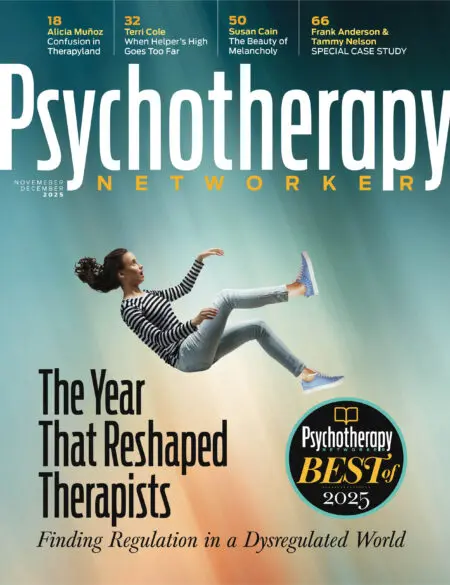Editor's Note
Rich SimonEverywhere at Once
Esther Perel Is Becoming Therapy's Most Visible PresenceBy questioning some of the fundamental premises of traditional marriage, couples therapist Esther Perel has become, at least for the moment, psychotherapy’s... Read more
Busting the Myth of the One-Size-Fits-All Marriage
An Interview with Esther PerelEsther Perel traces the development of her approach and the wider response to her ideas about sexuality and intimacy. Read more
The Long Shadow of Patriarchy
Couples Therapy in the Age of TrumpThe election of Donald Trump and the resurgence of populism throughout the West were fueled by a renewed pull toward certain notions of traditional... Read more
The Science of Togetherness
Making Couples Therapy More EffectiveDespite all the intellectual excitement it generated, the hard truth is that, so far, the systems revolution hasn’t led to very effective ways of doing... Read more
Extra Feature
Daring to Play
The Challenge of Embracing Our Youngest ClientsAlthough they make up nearly a quarter of the population, children are rarely a central part of therapists’ practices. Why? The most effective interventions... Read more












